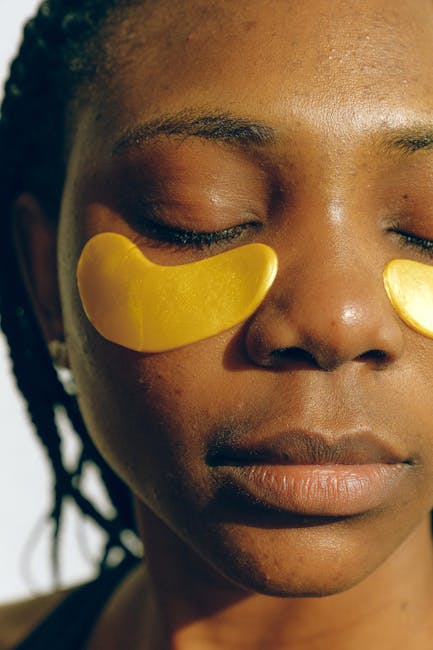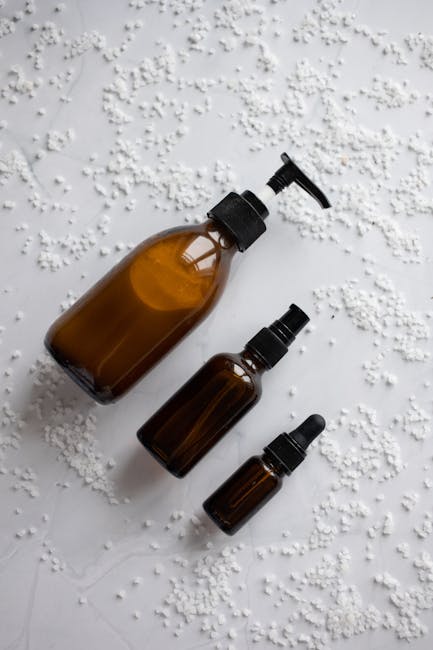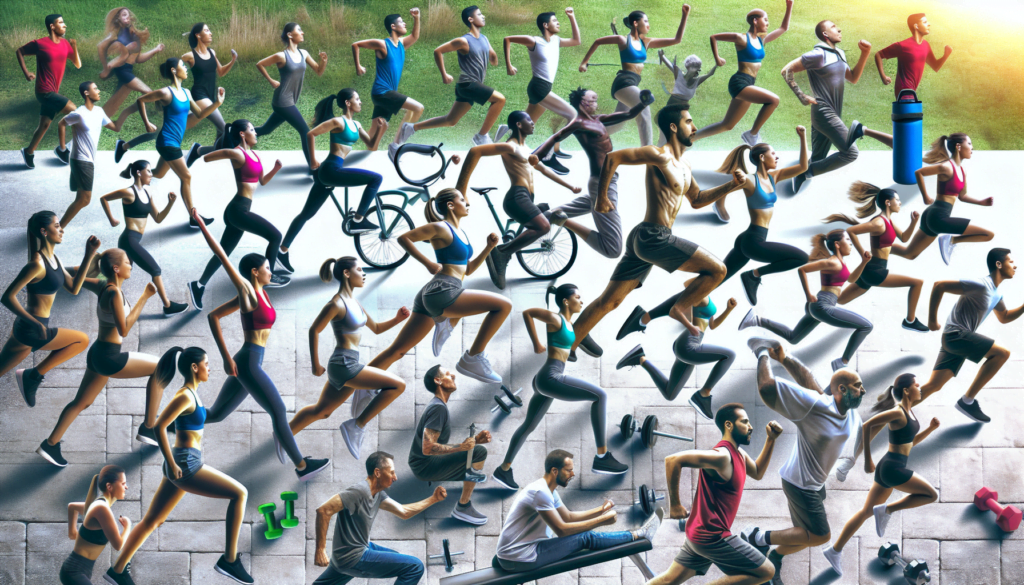Feeling overwhelmed or run down? You’re not alone. In our fast-paced world, self-care has become a buzzword for a reason—it’s absolutely essential. And guess what? One of the most effective forms of self-care is physical activity. It’s not just about getting fit; it’s about feeling good, inside and out. Keep reading to discover how moving your body can be a game-changer for your overall well-being.
Key Takeaways
- Physical activity is a cornerstone of effective self-care, offering numerous benefits for both mental and physical health.
- Regular exercise can significantly reduce stress and improve mood, acting as a natural antidepressant.
- Incorporating physical activity into your daily routine can be simple and enjoyable, with strategies to overcome common barriers.
- Building and maintaining an exercise routine is crucial for long-term well-being and can be achieved through realistic goal setting and consistency.
- Play and sport add a fun dimension to exercise, enhancing social connections and mental health.
- Long-term engagement in physical activity can lead to sustained improvements in mental and physical health, contributing to a holistic approach to self-care.
Introduction to Physical Activity as Self-Care
Definition of Self-Care
Self-care is the practice of taking an active role in protecting one’s own well-being and happiness, particularly during periods of stress. It’s about nurturing yourself to improve your health, reduce stress, and prevent burnout.
Importance of Physical Activity in Self-Care
Physical activity is a powerful tool in the self-care arsenal. It’s not just about the physical benefits, such as increased strength and endurance; it’s also about the psychological uplift that comes with regular movement.
Overview of Physical Activity Benefits
The benefits of physical activity are vast, ranging from improved cardiovascular health to enhanced mental clarity. By engaging in regular exercise, you’re not just caring for your body; you’re also investing in your mental and emotional health.

Exercise and Stress Relief
Understanding Stress and Its Effects
Stress is your body’s response to any demand or challenge. While a little stress can be motivating, too much can be debilitating, affecting your health and quality of life.
How Physical Activity Alleviates Stress
When you exercise, your body releases endorphins, the feel-good neurotransmitters that act as natural stress-fighters. Regular physical activity helps you manage stress more effectively, keeping you calmer and more balanced.
Examples of Stress-Relieving Exercises
Activities like yoga, tai chi, and even brisk walking can significantly lower stress levels. The key is to find an exercise you enjoy, so it becomes a stress-relieving part of your routine, not another chore.

The Psychological Benefits of Regular Exercise
Impact on Mood
Mood Enhancement Through Endorphins
Endorphins are your body’s natural mood lifters. Exercise triggers their release, providing a mood boost that can last well beyond your workout.
Exercise as a Natural Antidepressant
Studies have shown that regular physical activity can be as effective as medication for some people in treating mild to moderate depression, making it a vital component of mental health care (source).
Exercise and Self-Esteem
Building Confidence Through Achievement
Every time you complete a workout, you’re not just building muscle; you’re building confidence. Achieving your fitness goals can lead to a stronger sense of self-worth.
Body Image and Self-Perception
As you become fitter and healthier, your body image and self-perception can improve. This positive self-image contributes to overall feelings of well-being.
Reducing Symptoms of Depression and Anxiety
Clinical Studies on Exercise and Mental Health
Clinical studies have consistently demonstrated the efficacy of exercise in reducing symptoms of depression and anxiety, making it a key strategy in mental health management (source).
Long-Term Benefits for Anxiety and Depression
The long-term benefits of exercise include sustained improvements in mental health, providing a compelling reason to make physical activity a regular part of your life.

Incorporating Physical Activity into Daily Life
Strategies for Daily Physical Activity
Making Time for Exercise
We all have the same 24 hours in a day, but it’s how we use them that counts. Prioritizing exercise means making it a non-negotiable part of your daily schedule.
Practical Ways to Stay Active
From taking the stairs instead of the elevator to parking further away from the store entrance, there are numerous ways to sneak extra movement into your day.
Overcoming Common Barriers
Time Management
One of the biggest barriers to regular exercise is time. But with a bit of planning and prioritization, you can find time to move more every day.
Motivation and Goal Setting
Setting clear, achievable goals can help you stay motivated. Whether it’s running a 5K or simply walking for 30 minutes a day, having a target to aim for can keep you on track.
Physical Activity at Home, Work, and Out and About
At-Home Exercise Options
You don’t need a gym membership to stay active. Home workout videos, gardening, and even cleaning can get your heart rate up.
Being Active in the Workplace
Consider a standing desk, or take short breaks to walk around the office. Every bit of movement counts towards your daily goal.
Opportunities for Activity in Public Spaces
Take advantage of public parks, community swimming pools, and local hiking trails to add variety to your exercise routine.

Building and Maintaining an Exercise Routine
Starting an Exercise Routine
Identifying Suitable Activities
Choose activities that you enjoy and look forward to. This could be anything from dancing to rock climbing—what matters is that it excites you.
Beginning with Manageable Steps
Start small and gradually increase the intensity and duration of your workouts. This approach helps prevent injury and discouragement.
Sticking with It: The Role of Consistency
The Importance of Routine
Consistency is key when it comes to exercise. A regular routine helps cement the habit, making it easier to stick with over time.
Adapting to Lifestyle Changes
Life is unpredictable, but your exercise routine doesn’t have to be. Be flexible and willing to adjust your activities to fit your changing circumstances.
Setting and Achieving Goals
Realistic Goal Setting
Set goals that are challenging yet achievable. Unrealistic goals can lead to frustration and a sense of failure.
Tracking Progress and Celebrating Milestones
Keep a record of your progress and take time to celebrate your achievements. This not only boosts morale but also reinforces the habit.

The Role of Play and Sport in Self-Care
Benefits of Playful Activities
Incorporating Fun into Exercise
When exercise feels like play, you’re more likely to do it. Find activities that make you laugh, smile, and lose track of time.
Social Interaction and Play
Engaging in group activities or team sports can provide a sense of community and belonging, which is essential for mental health.
Mental Health Benefits of Participating in Sports
Team Sports and Camaraderie
Team sports offer a unique combination of exercise and social interaction, contributing to a sense of camaraderie and support.
Individual Sports and Personal Growth
Individual sports like tennis or swimming can challenge you to set personal bests and achieve new levels of performance.
Practical Tips for Integrating Physical Activity into Self-Care
Selecting Enjoyable Forms of Exercise
Choose exercises that you genuinely enjoy. If you love being outdoors, opt for cycling or hiking. If music is your thing, try dance classes or Zumba.
Making Physical Activity Practical and Convenient
Select activities that fit into your lifestyle and schedule. The more convenient the activity, the more likely you are to stick with it.
Adapting Activities to Fit Personal Preferences and Lifestyle
Tailor your exercise routine to your personal preferences and lifestyle. This customization ensures that your physical activity is a pleasure, not a burden.

The Long-Term Impact of Physical Activity on Well-Being
Sustained Mental Health Improvements
Engaging in regular physical activity can lead to long-term improvements in mental health, making it a critical component of a holistic self-care plan.
Physical Health and Its Relation to Mental Well-Being
Good physical health is intrinsically linked to mental well-being. A healthy body supports a healthy mind, and vice versa.
The Holistic Approach to Self-Care with Physical Activity
Physical activity should be integrated into a broader self-care strategy that includes nurturing healthy relationships, managing stress, and practicing mindfulness (source).
Further Ideas for Starting or Keeping Up with Physical Activity
Seeking New Physical Activities
Keep your routine fresh by trying new activities. This can reignite your passion for exercise and prevent boredom.
Community Resources and Support
Look for community resources like local sports leagues or fitness groups. The support of others can be a powerful motivator.
Technology and Apps to Aid Physical Activity
Use technology to your advantage. Fitness apps can help you track your progress, set reminders, and stay motivated.
Conclusion: Embracing Physical Activity as a Pillar of Self-Care
Recap of Key Points
Physical activity is more than just a way to stay fit—it’s a vital part of self-care. It can reduce stress, improve mood, and contribute to long-term mental and physical health.
Encouragement to Take the First Step
If you haven’t already, now is the time to take that first step towards integrating physical activity into your self-care routine. Remember, every journey begins with a single step.
The Ongoing Journey of Self-Care and Physical Activity
Embrace physical activity as a lifelong journey, not a destination. It’s an ongoing process that evolves with you, contributing to your overall well-being and happiness. So lace up those sneakers, and let’s get moving!
Energize Your Well-being: Discover the Power of Movement with Our Physical Activity & Self-Care FAQ!
Why is physical activity important for self-care?
Physical activity is a cornerstone of self-care because it has numerous benefits for both the body and mind. Regular exercise can help reduce the risk of chronic diseases, improve cardiovascular health, and enhance strength and flexibility. Additionally, it boosts mental health by reducing symptoms of depression and anxiety, increasing self-esteem, and promoting better sleep. Engaging in physical activity can also be a form of stress relief, providing a break from daily routines and a chance to focus on personal well-being.
How much physical activity is recommended for adults?
For most adults, the World Health Organization recommends at least 150 minutes of moderate-intensity aerobic physical activity or at least 75 minutes of vigorous-intensity aerobic physical activity throughout the week. Additionally, muscle-strengthening activities should be done involving major muscle groups on 2 or more days a week. However, any amount of physical activity is better than none, and individuals should gradually increase their activity levels based on their abilities and health conditions.
Can physical activity improve mental health?
Yes, physical activity can significantly improve mental health. Exercise releases endorphins, which are chemicals in the brain that act as natural painkillers and mood elevators. Regular physical activity can reduce stress, alleviate symptoms of depression and anxiety, boost self-esteem, and improve cognitive function. It also provides a sense of accomplishment and can be a way to socialize and connect with others, further enhancing mental well-being.
What types of physical activities are best for self-care?
The best types of physical activities for self-care are those that you enjoy and can consistently incorporate into your routine. This could include walking, cycling, swimming, dancing, yoga, or team sports. The key is to choose activities that suit your lifestyle, preferences, and health status. Variety can also keep exercise interesting and challenge different muscle groups.
How can I stay motivated to keep up with physical activity?
Staying motivated for physical activity involves setting realistic goals, creating a routine, and finding activities you enjoy. Tracking your progress, rewarding yourself for milestones, and having an exercise buddy can also help maintain motivation. Remember to listen to your body and adjust your activities as needed, and consider that even short bouts of exercise can be beneficial.
Is physical activity safe for everyone?
While physical activity is beneficial for most people, it’s important to consider individual health conditions and limitations. Those with chronic health issues, disabilities, or special concerns should consult with a healthcare provider before starting a new exercise program. A healthcare provider can help tailor an exercise regimen that is safe and beneficial based on one’s specific needs.
How does physical activity contribute to weight management?
Physical activity helps with weight management by burning calories, building muscle, and boosting metabolism. Regular exercise, especially when combined with a balanced diet, can help maintain a healthy weight or contribute to weight loss. It’s important to find a sustainable routine that incorporates both aerobic and strength-training exercises for optimal results.
What if I don’t have time for exercise?
Lack of time is a common barrier to physical activity, but there are ways to incorporate exercise into a busy schedule. Short bouts of activity, such as 10-minute walks, can add up over the day. Other strategies include active commuting, taking the stairs, doing bodyweight exercises during short breaks, or engaging in high-intensity interval training (HIIT) for a quick and effective workout.
Can physical activity help with chronic pain management?
Yes, physical activity can be an effective way to manage chronic pain. Exercise can help reduce pain levels, improve mobility, and enhance the quality of life for those with chronic pain conditions. It’s important to start slowly and choose low-impact activities that won’t exacerbate pain. Consulting with a healthcare provider or a physical therapist can provide guidance on appropriate exercises.
How do I start incorporating physical activity into my self-care routine?
Incorporating physical activity into your self-care routine starts with setting attainable goals and finding activities that fit your interests and lifestyle. Begin with small, manageable steps, such as a daily walk or a few minutes of stretching. Gradually increase the duration and intensity of your activities as you become more comfortable. Remember to prioritize consistency over intensity, and make your exercise time a non-negotiable part of your self-care regimen.



